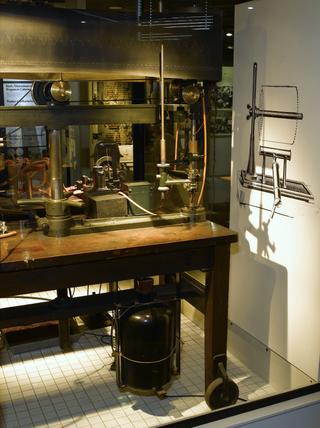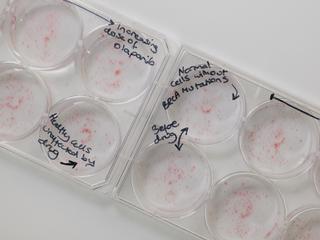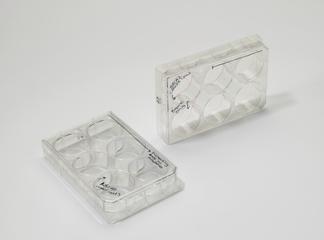
Cup used during 1952 expedition to Mount Cho Oyu
- Made:
- 1952-3 in unknown place








Cup for drinking and measuring liquid intake, as well as some food items such as sugar, during 1952 expedition to Mount Cho Oyu, used by Dr Griffith Pugh to provide physiological data for formulating food rations for the Mount Everest expedition of 1953, United Kingdom, 1952-3.
What does it take to climb Everest, the world’s tallest mountain? Preparations for the 1953 Everest attempt began in 1952 with a reconnaissance and research trip to Mount Cho Oyu, about 20km west of Everest and the world’s sixth highest mountain. During this trip, one of the topics researched by physiologist Dr Griffith Pugh was how much food and fluid is needed for high altitude climbing. Dehydration is one of the biggest risks climbers face at high altitudes. However, traditionally climbers’ have drunk very little during high altitude expeditions. Pugh really emphasised the importance of staying hydrated. His research found that not only did climbers require more hydration because of the exertion, but also because the air is very dry at altitude and the lower levels of oxygen mean that people breathe more heavily. Pugh’s research showed that in a 7-hour day, climbers would lose about 1 litre of water from the lungs alone. Climbers also lose their appetites at high altitude, and this makes it very difficult to them to consume enough calories to match the intensity of what they are doing. The results Pugh calculated suggested that during the preparatory expedition to Mount Cho Oyu, the climbers expended 3960 calories and took in only 3189. As a result, Pugh designed special assault rations used during the final summit attempts that contained high calorie foods and climbers were able to preselect some of their favourite foods to make sure that there was likely to be something that they found appealing, even with a reduced appetite. Calorie heavy drinks like lemonade made with lemon and large quantities of sugar also helped to both reduce dehydration and increase calorie intake. It was notable that climbers on Everest in 1953, maintained their physical fitness and their weight much better than climbers on Mount Cho Oyu had in 1952.
When Edmund Hillary and Tenzing Norgay awoke at 4am at a height of around 8503 meters (27900 feet) to begin their summit attempt, they drank large amounts of lemonade (made with lemon and sugar) in a “determined effort to prevent the weaknesses arising from dehydration.”
By the 1950s, there had been several attempts to summit Everest and some climbers had got very close, but none had made it. The pioneering research of Dr Griffith Pugh was a key factor in the success of Edmund Hillary and Tenzing Norgay’s climb in 1953. Pugh’s background made him uniquely suited to this work. He was a practising doctor, but also a world class skier. He was selected to represent Great Britain in skiing at the 1936 Winter Olympics, but he was unable to attend due to injury. He also trained soldiers at the School of Mountain Warfare in Lebanon during the Second World War. It was here that Pugh began to research the impact of high altitude and extreme conditions on the body, leading to his work on Everest. Pugh took part in the expedition to Everest in 1953 and the preparatory expedition in the Himalayas in 1952, believing that laboratory research could not accurately recreate the experience of being in these extreme environments. His work established principles about acclimatising to altitude, food and water consumption during climbs, and oxygen usage that continued to be used by climbers for decades.
Details
- Category:
- Laboratory Medicine
- Object Number:
- 2017-55
- Materials:
- plastic (unidentified)
- Measurements:
-
overall: 100 mm x 139 mm x 100 mm,
- type:
- cup
- credit:
- Simon Pugh




